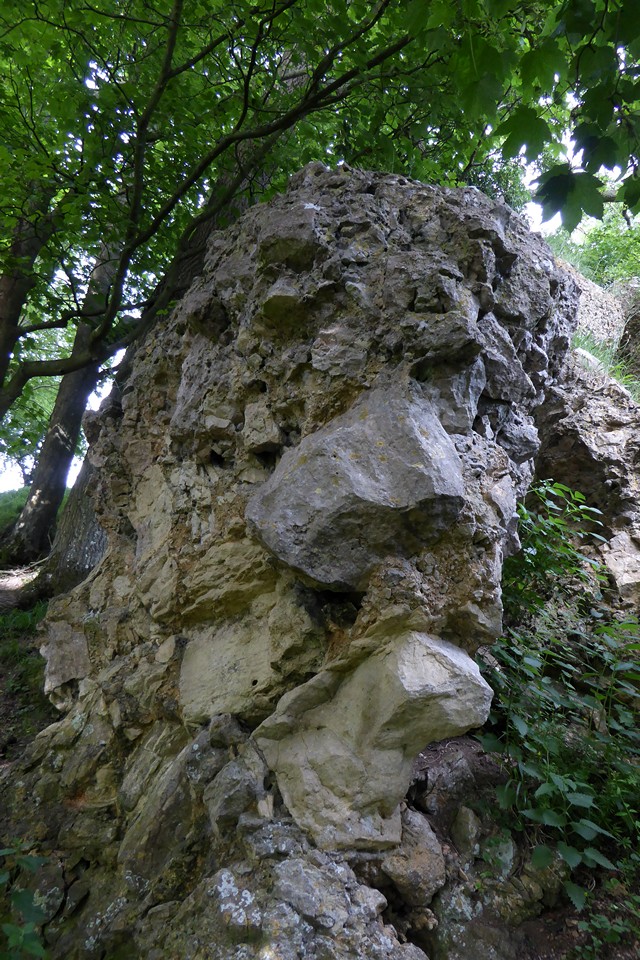
Looking up at the King Stone.

Looking up at the King Stone.

Detail of the Queen Stone.

King Stone and Queen Stone.

Looking down on the King Stone (centre) and Queen Stone (right).
Bredon Hill Ramble.
Members of the Cheltenham Rambling Club enjoyed a ramble to Bredon Hill. Alighting from the train at Ashchurch they went to Tewkesbury by road. The party then divided, some members taking the river path to Twyning whilst the others went via Shuthonger Common.
The whole party then crossed the river by ferryboat, and made their way by fieldpath to the picturesque village of Bredon. After lunch the ramblers ascended Bredon Hill and spent some time examining the King and Queen Stones reputed to be capable of curing rickets. ...
There’s something about squeezing through a gap that works in these cases isn’t there. Is it like popping out reborn? Reported in the Gloucestershire Echo, 29th May 1945.
We inquired of several persons in the neighbourhood as to the origin of the name “King and Queen,” as applied to these rocks of oolitic conglomerate, but could get no information, or hear of any tradition concerning them.
An “old inhabitant” of Eckington, however, told us that a manorial court had been formerly, but was not at present proclaimed at the spot, and further said, that he remembered that it used to be a custom years ago for the stones to be whitewashed previously to the holding of the court. This, Mr Lukis thought, was a vestige of the ancient lustration or consecration of them, which might have taken place annually.
There does not appear to be any mark of sculpture upon the stones; but as there is a fissured passage between the “King and Queen,” and between the “King” and the adjoining mass of rock on the other side, it is probable that there may have been some superstition in connection with the passing through of these cavities.
p177 of ‘Pictures of Nature in the Silurian Region Around the Malvern Hills and Vale of Severn’ by Edwin Lees (1856). Online at Google Books.





































